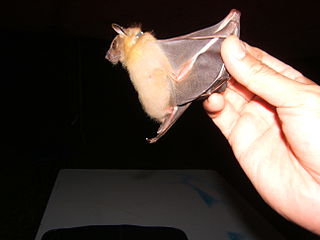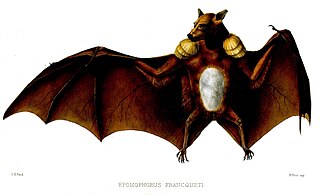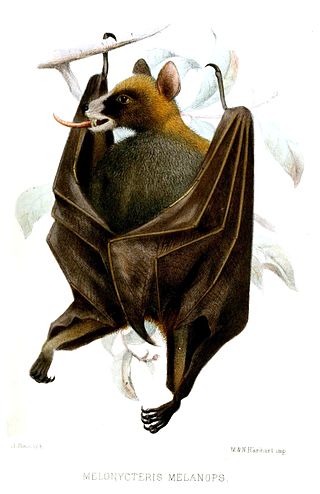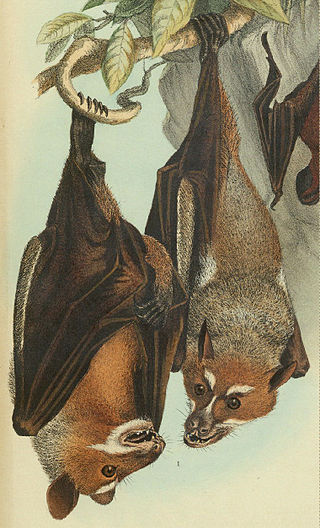
Megabats constitute the family Pteropodidae of the order Chiroptera (bats). They are also called fruit bats, Old World fruit bats, or—especially the genera Acerodon and Pteropus—flying foxes. They are the only member of the superfamily Pteropodoidea, which is one of two superfamilies in the suborder Yinpterochiroptera. Internal divisions of Pteropodidae have varied since subfamilies were first proposed in 1917. From three subfamilies in the 1917 classification, six are now recognized, along with various tribes. As of 2018, 197 species of megabat had been described.

The New World leaf-nosed bats (Phyllostomidae) are found from southern North America to South America, specifically from the Southwest United States to northern Argentina. They are ecologically the most varied and diverse family within the order Chiroptera. Most species are insectivorous, but the phyllostomid bats include within their number true predatory species and frugivores. For example, the spectral bat, the largest bat in the Americas, eats vertebrate prey, including small, dove-sized birds. Members of this family have evolved to use food groups such as fruit, nectar, pollen, insects, frogs, other bats, and small vertebrates, and in the case of the vampire bats, even blood.

Michael Rogers Oldfield Thomas was a British zoologist.

Cynopterus is a genus of megabats. The cynopterine section is represented by 11 genera, five of which occur in Malaysia, namely, Chironax, Balionycteris, Penthetor, Dyacopterus, and Cynopterus. About 30 names for Cynopterus species have been proposed, but only 16 are taxonomically valid forms.
Dyacopterus is a genus of megabats from south-east Asia. It contains three species, namely:

The Neotropical fruit bats (Artibeus) are a genus of bats within the subfamily Stenodermatinae. The genus consists of 12 species, which are native to Central and South America, as well as the Caribbean.
Aethalops is a genus of megabats in the family Pteropodidae. It contains two species:
Casinycteris is a genus of bats described in 1910. It currently consists of three species:

Dobsonia is a genus of megabat in the family Pteropodidae. It contains the following 13 species:

Epomophorus is a genus of bat in the family Pteropodidae. They have a distribution throughout Africa.

Epomops is a genus of bat in the family Pteropodidae. It contains the following species:

The harpy fruit bat is a species of megabat in the family Pteropodidae. It is endemic to the Philippines.

Melonycteris is a genus of megabat in the family Pteropodidae. Members are found in the Solomon Islands or in the case of the black-bellied fruit bat, in Papua New Guinea.
Micropteropus is a genus of bat in the family Pteropodidae. It contains the following species:

Ptenochirus is a genus of bat in the family Pteropodidae. It contains the following species:

Styloctenium is a genus of stripe-faced fruit bat in the Pteropodidae (megabat) family. It comprises the following species:

Eidolon is a genus of megabats in the family Pteropodidae. It contains two species:

Thomas's fruit-eating bat, sometimes also popularly called Watson's fruit-eating bat, is a species of bat in the family Phyllostomidae. It is found from southern Mexico, through Central America to Colombia. Its South American range is to the west of the Andes. The species name is in honor of H. J. Watson, a plantation owner in western Panama who used to send specimens to the British Natural History Museum, where Oldfield Thomas would often describe them.
H. celebensis may refer to:













